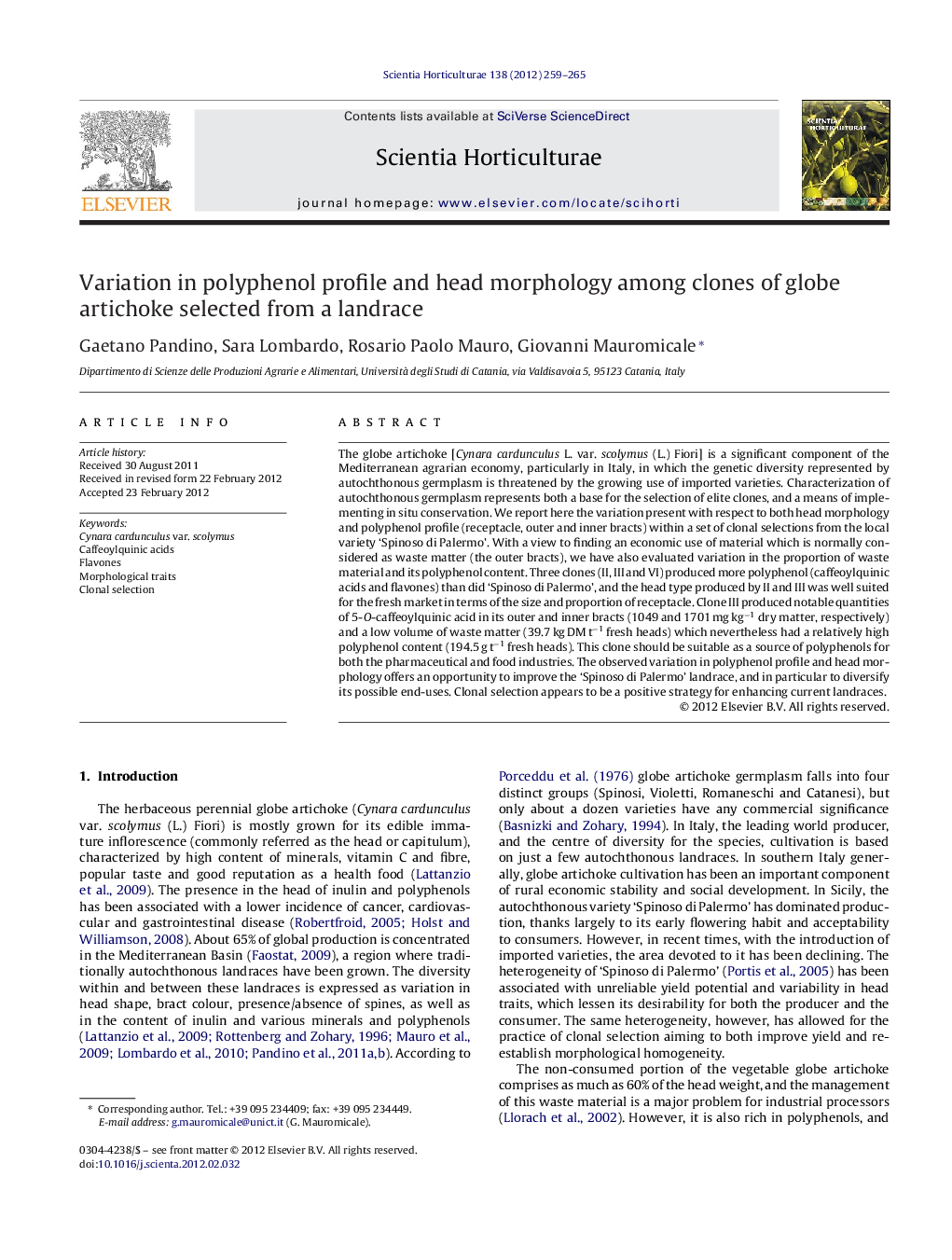| Article ID | Journal | Published Year | Pages | File Type |
|---|---|---|---|---|
| 4567721 | Scientia Horticulturae | 2012 | 7 Pages |
The globe artichoke [Cynara cardunculus L. var. scolymus (L.) Fiori] is a significant component of the Mediterranean agrarian economy, particularly in Italy, in which the genetic diversity represented by autochthonous germplasm is threatened by the growing use of imported varieties. Characterization of autochthonous germplasm represents both a base for the selection of elite clones, and a means of implementing in situ conservation. We report here the variation present with respect to both head morphology and polyphenol profile (receptacle, outer and inner bracts) within a set of clonal selections from the local variety ‘Spinoso di Palermo’. With a view to finding an economic use of material which is normally considered as waste matter (the outer bracts), we have also evaluated variation in the proportion of waste material and its polyphenol content. Three clones (II, III and VI) produced more polyphenol (caffeoylquinic acids and flavones) than did ‘Spinoso di Palermo’, and the head type produced by II and III was well suited for the fresh market in terms of the size and proportion of receptacle. Clone III produced notable quantities of 5-O-caffeoylquinic acid in its outer and inner bracts (1049 and 1701 mg kg−1 dry matter, respectively) and a low volume of waste matter (39.7 kg DM t−1 fresh heads) which nevertheless had a relatively high polyphenol content (194.5 g t−1 fresh heads). This clone should be suitable as a source of polyphenols for both the pharmaceutical and food industries. The observed variation in polyphenol profile and head morphology offers an opportunity to improve the ‘Spinoso di Palermo’ landrace, and in particular to diversify its possible end-uses. Clonal selection appears to be a positive strategy for enhancing current landraces.
► In South Italy, the increasing use of exotic germplasm is eroding the presence of traditional landraces. ► Characterization of autochthonous germplasm may implement in situ conservation. ► We report the variation of head morphology and polyphenol profile of ‘Spinoso di Palermo’ clones. ► The studied clones had more caffeoylquinic acids and flavones than ‘Spinoso di Palermo’. ► Clonal selection appears to be a positive strategy for enhancing current landraces.
